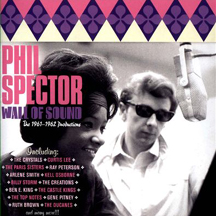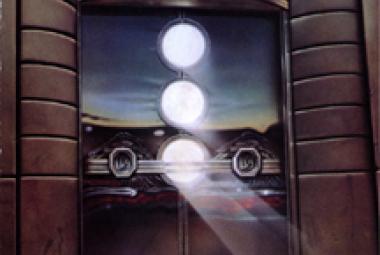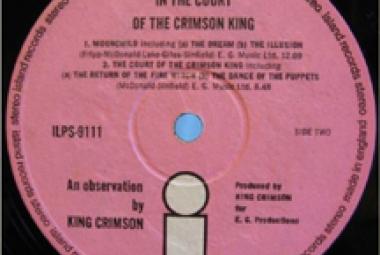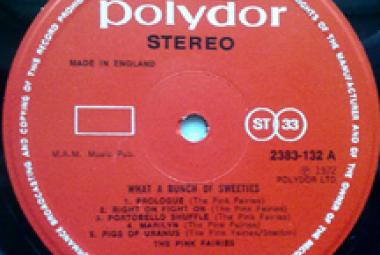The Wall of Sound (also called the Spector Sound) is a music production formula developed by record producer Phil Spector at Gold Star Studios in the 1960s, with assistance from engineers Stan Ross, Larry Levine, and the session musician conglomerate known as "the Wrecking Crew". The intent was to create a dense aesthetic that came across well on AM radio and jukeboxes popular in the era. In order to attain the Wall of Sound, Spector's arrangements called for large ensembles (including some instruments not generally used for ensemble playing, such as electric and acoustic guitars), with multiple instruments doubling and even tripling many of the parts to create a fuller, richer sound. Spector also included an array of orchestral instruments — strings, woodwind, brass and percussion — not previously associated with youth-oriented pop music, characterizing his methods as "a Wagnerian approach to rock & roll: little symphonies for the kids". (More from Wikipedia)
"Da Doo Ron Ron" was a #3 hit in 1963 for the girl-group the Crystals; and it was written by another famous 1960's songwriter couple, Jeff Barry and Ellie Greenwich, together with Phil Spector (now infamous for his 2009 conviction for a murder in his home in 2003). This song is a classic example of Spector's legendary "wall of sound" production technique.
(May 2013)
Phil Spector perfected his renowned "Wall of Sound" technique while making girl group records, where massive amounts of music were recorded together with a subtle echo effect. "Sleigh Ride" by the Ronettes and "Da Doo Ron Ron" by the Crystals are cited as being prime examples of this technique. Phil Spector himself says that he reached his peak with the recording of "River Deep, Mountain High" by Ike and Tina Turner; George Harrison has called that song "a perfect record from start to finish".
(October 2013)
* * *
The Beatles performed a sort of mini-Wall of Sound at the close of their masterful Sgt. Pepper's Lonely Hearts Club Band album, not long after Phil Spector came along. Following the second symphonic build-up within "A Day in the Life", the orchestra swelled into a crescendo, and then there was a thunderous piano chord (an E-major chord to be exact). Many people who have been around a piano marvel at how long the instrument can hold a note; and here, the Beatles were dealing that expectation up in spades with a long, slow fade for nearly one full minute before the sound faded into background hiss.
Actually though, it wasn't just one piano: John Lennon, Paul McCartney, Ringo Starr, and one of the Beatles' roadies, Mal Evans were manning different pianos; while George Martin was playing the same chord on a harmonium. What's more, the gain was gradually turned up as the chord faded in order to prolong the effect – at the end (they tell me), it is possible to hear background sounds in the recording studio: rustling papers, a squeaking chair, and the air conditioners.
(October 2013)
* * *
Superstar record producer Phil Spector used members of the Wrecking Crew to create his famed "Wall of Sound"; while Beach Boys bandleader Brian Wilson used these musicians on their acclaimed Pet Sounds album and their Number One hit "Good Vibrations".
Wikipedia reports: "[Carol Kaye]'s intense solo bass line, reverberating in quiet moments in [Phil] Spector's production of [Ike and Tina Turner's] 'River Deep, Mountain High', lent drama to the song's 'Wall of Sound' and helped lift the record into the Grammy Hall of Fame."
(February 2015)















